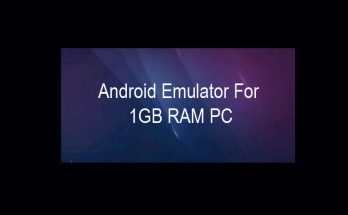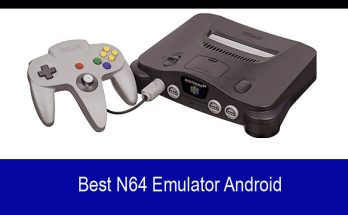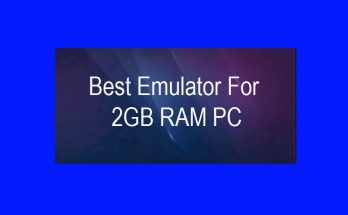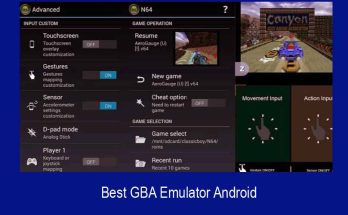Have you ever wished you could run an Android app or game on your PC so you wouldn’t get banned on a small phone screen? You might need to test a feature on Android, but you don’t have an Android device handy. Your options will depend on your mobile device or what version of Windows you’re using, but here are a few ways to run Android (and its apps) on your computer.
Mirror Your Phone With Windows
For the apps installed on your phone, you don’t need anything special to install Android on your PC. The Microsoft Your Phone app lets you connect your Android mobile device to Windows to access apps, view notifications and photos, and send messages. You can even bookmark Android apps or pin them directly to the Windows system tray.
If you want to mirror your phone screen directly, just click on the phone screen image in your phone desktop app. Give permission to the app on your phone and your phone screen will appear in Windows. You can then navigate the phone screen with the click of a mouse.
This is not always the ideal solution. While this feature works with many Android phone manufacturers, it works best with Samsung phones. Windows 10 PC with May 2020 update or higher with at least 8GB RAM and Android 11 required for some features. Games can have lags and graphics blur that you can’t share. Files from your PC directly into an application on Android. But for quick access to already installed Android apps, it certainly works in a pinch.
Run Android Directly on Your PC With Android-x86
If you’re looking for something a little more expansive, the Android x86 project will get you as close to real Android as possible on your PC. Android-x86 is an open-source project that will bring Android to the x86 platform so that you can run it on your computer instead of an ARM phone or tablet.
To run Android-x86, you have several options. If you want to run Android only as a desktop operating system for your PC, you can download it as an ISO disc image and burn it to a USB stick with a program like Rufus. Then plug that USB drive into the PC in question, reboot, and open the boot menu (usually by pressing a key like F12 during the boot process).
When you boot from your Android x86 USB drive, you can run Android in a live environment without affecting your PC, or install it on your PC’s hard drive for permanent use (and better performance).
Alternatively, if you want to run Android-x86 on your existing operating system, you can download the disk image and run it in VirtualBox. Again, it’s a bit more advanced if you’re not familiar with VirtualBox, but our guide on how to run Windows on Mac can help you start the process.
The official site also has some tips on how to get Android-x86 to work in a virtual machine. It’s more work than using BlueStacks, but it’s also closer to pure Android, which is a nice bonus.

Run Your Favorite Apps With BlueStacks
If you just want to run a few apps and don’t need the emulator to look like Android, you should try BlueStacks. Over the years, it has become the best Android app emulator and it is packed with features to make your apps and games run smoothly. Since you are using virtualization to emulate Android, you should go to your computer’s BIOS and enable Intel VT-x or AMD-V if your computer supports it for the best performance.
Install BlueStacks like any other Windows or Mac application. BlueStacks 5, the latest version of the software, takes up 5 GB of space on your computer (plus any apps you download). Open the app and you’ll be greeted with a personalized home screen and access to the Play Store. Download the apps you want and they will appear on the BlueStacks start screen and Windows desktop as your own shortcuts. Simply double-click on an icon to launch this application.
BlueStacks is great for apps that don’t have desktop apps, but the emulator really shines when it comes to gaming. The emulator has built-in mappings for your mouse and keyboard that you can customize using the touch controls found in various Android games.
You can also adjust the resolution, DPI, FPS, and the amount of CPU or RAM allocated to the emulator to ensure you get the best balance of speed and graphics fidelity. (This is useful because, like many virtual machines, BlueStacks is resource intensive.)
Sadly, BlueStacks comes with some ads and clutter, but it’s not as annoying as it used to be, and it’s a small price to pay for the features you get, especially given the Android version options that you get. he proposes.
Emulate Full Android Experience With Genymotion
If you want to explore the Android operating system on your own rather than individual apps, Genymotion is a decent emulator. The main product is designed for developers and costs money, but there is a free version of the software that you can download for personal use. All you need to do is create an account on the website.
Install Android Apps From the Amazon Appstore
With Windows 11, Microsoft is adding built-in support for Android apps, but for now, it’s limited to those participating in the Windows Insider beta program, who can currently play with 50 apps from the Amazon Appstore. You will also need a PC that can run Windows 11.
Windows 11 uses a feature called Windows Subsystem for Android which makes Android apps compatible with Microsoft’s own operating system. You need to install the Amazon Appstore from the Microsoft Store, which will ask you to install the Windows Subsystem. Here is a full description.






